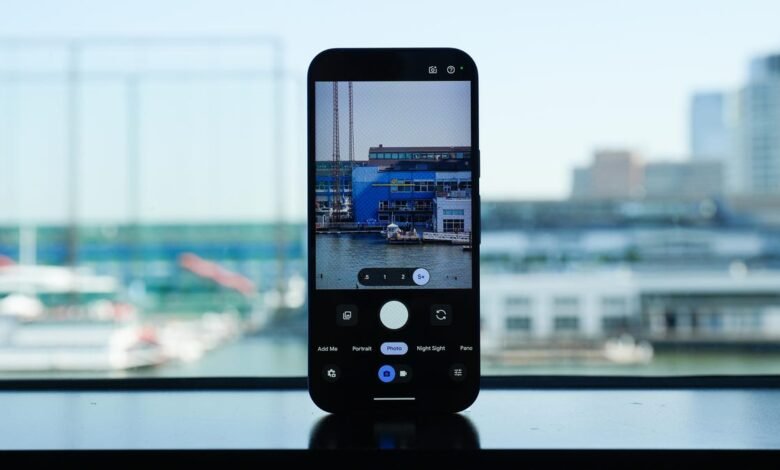Google Pixel Surpasses iPhone in Camera Performance

▼ Summary
– The Google Pixel 10 Pro uses AI-powered Pro Res Zoom to significantly improve the quality of 100x zoom photos, making them more usable and less grainy.
– Early comparison shots show the Pixel 10 Pro outperforming the Samsung Galaxy S25 Ultra in zoom photography at the same distance.
– Current smartphone zoom capabilities from Samsung and Apple become pixelated and unusable beyond 5x-10x zoom, unlike Google’s new AI-enhanced approach.
– Google’s 100x zoom capability exceeds the focal length of standard professional full-frame camera lenses, potentially giving it an unmatched advantage.
– Apple is expected to respond with competitive AI-enhanced zoom technology in the upcoming iPhone 17 Pro models to match Google’s innovation.
The Google Pixel 10 Pro has raised the bar for smartphone photography, particularly in the realm of zoom capabilities, outperforming even the latest iPhone models. Leveraging advanced AI and a powerful new Tensor G5 chip, Google’s latest flagship introduces a feature called Pro Res Zoom, which promises to make extreme digital zoom, up to 100x, far more practical and visually appealing than ever before.
For anyone passionate about mobile photography, this development is a game-changer. Many smartphone cameras now produce images that rival those from professional mirrorless systems in everyday conditions. Yet, one area where phones have consistently fallen short is long-distance zoom. Grainy, pixelated results have made it necessary to rely on dedicated cameras for crisp, detailed shots from afar. Google aims to change that with its new imaging approach.
The Pro Res Zoom uses what the company describes as its largest AI model ever integrated into a Pixel camera. This generative imaging system works to recover and refine intricate details that are typically lost in digital zoom. Rather than simply enlarging pixels, the AI reconstructs missing information, producing cleaner, more usable images even at extreme magnification.
Early comparisons with competitors like the Samsung Galaxy S25 Ultra show the Pixel pulling ahead in clarity and detail retention. Side-by-side shots reveal that Samsung’s 100x zoom still tends to look soft and artifact-heavy, while the Pixel’s version appears significantly sharper and more natural. This isn’t just a minor improvement, it’s a substantial leap in what’s possible with computational photography.
Even current top-tier devices like the iPhone 16 Pro Max and Galaxy S24 Ultra struggle beyond their optical zoom ranges. The iPhone’s 5x lens (roughly equivalent to 120mm) and Samsung’s 10x (around 200mm) are useful, but anything beyond these limits quickly deteriorates into a noisy, low-resolution mess. Google’s 100x digital zoom, by comparison, reaches focal lengths longer than most standard professional lenses, and does so with surprising fidelity.
During its launch event, Google demonstrated the Pro Res Zoom with a daylight sample showing impressive detail recovery. While ideal lighting certainly helps, the real test will come in more challenging conditions, low light, high contrast, or moving subjects. Early hands-on reports are promising, but thorough testing will determine how consistently the feature performs.
This innovation doesn’t just set a new standard for smartphones; it introduces a capability that even dedicated cameras can’t easily match. If Google’s AI-powered zoom proves reliable across various scenarios, it could reduce the need for carrying additional telephoto gear for many photographers.
Naturally, this puts pressure on other manufacturers, especially Apple. As the only company that has historically competed with Google in computational photography, Apple will likely respond with its own AI-enhanced zoom technology in future models, such as the anticipated iPhone 17 Pro. For now, though, the Pixel 10 Pro stands alone in pushing the boundaries of what a smartphone camera can achieve at a distance.
(Source: ZDNET)
